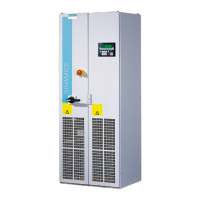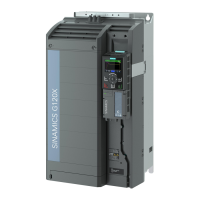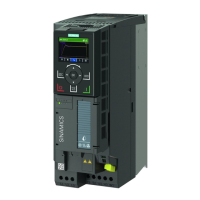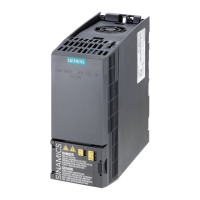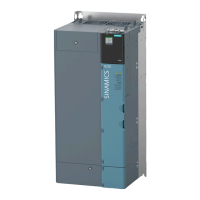Functions
8.1 Overview of converter functions
SINAMICS G110M Operating Instructions
162 Operating Instructions, 04/2015, FW V4.7.3, A5E31298649B AD
Functions relevant to all applications
Functions required in special applications only
The functions that your require in each application are
shown in the dark colours in the function overview above.
You set these function during basic commissioning, so that
in many cases, the motor can be operated without having to
make any additional settings.
The functions whose parameter you only need to adapt
when they are actually required are shown in white in the
function overview above.
is responsible for all of the
other converter functions. Among other things, it
defines how the converter responds to external
control signals.
Inverter control (Page 163)
The
avoid overloads and
operating states that could cause damage to the
motor, converter and driven load. The motor
temperature monitoring, for example, is set here.
Protection functions (Page 200)
The
defines where the control
signals are received from to switch on the motor,
for example, using digital inputs or a fieldbus.
Command sources (Page 168)
The functions
allow you
to control a motor holding brake or implement a
higher-level pressure or temperature control
using the technology controller.
Application-specific functions (Page 210)
The
provide digital and analog
signals at the Control Module outputs or using
the fieldbus. Examples include the current speed
of the motor or fault messages issued by the
converter.
Status messages (Page 209)
The
defines how the speed set-
point for the motor is specified, for example,
using an analog input or a fieldbus source.
Setpoint sources (Page 169)
The
uses a ramp-function
generator to prevent speed steps occurring and
to limit the speed to a permissible maximum
value.
Setpoint calculation (Page 176)
The
motor closed-loop control
ensures that the
motor follows the speed setpoint.
Motor control (Page 181)

